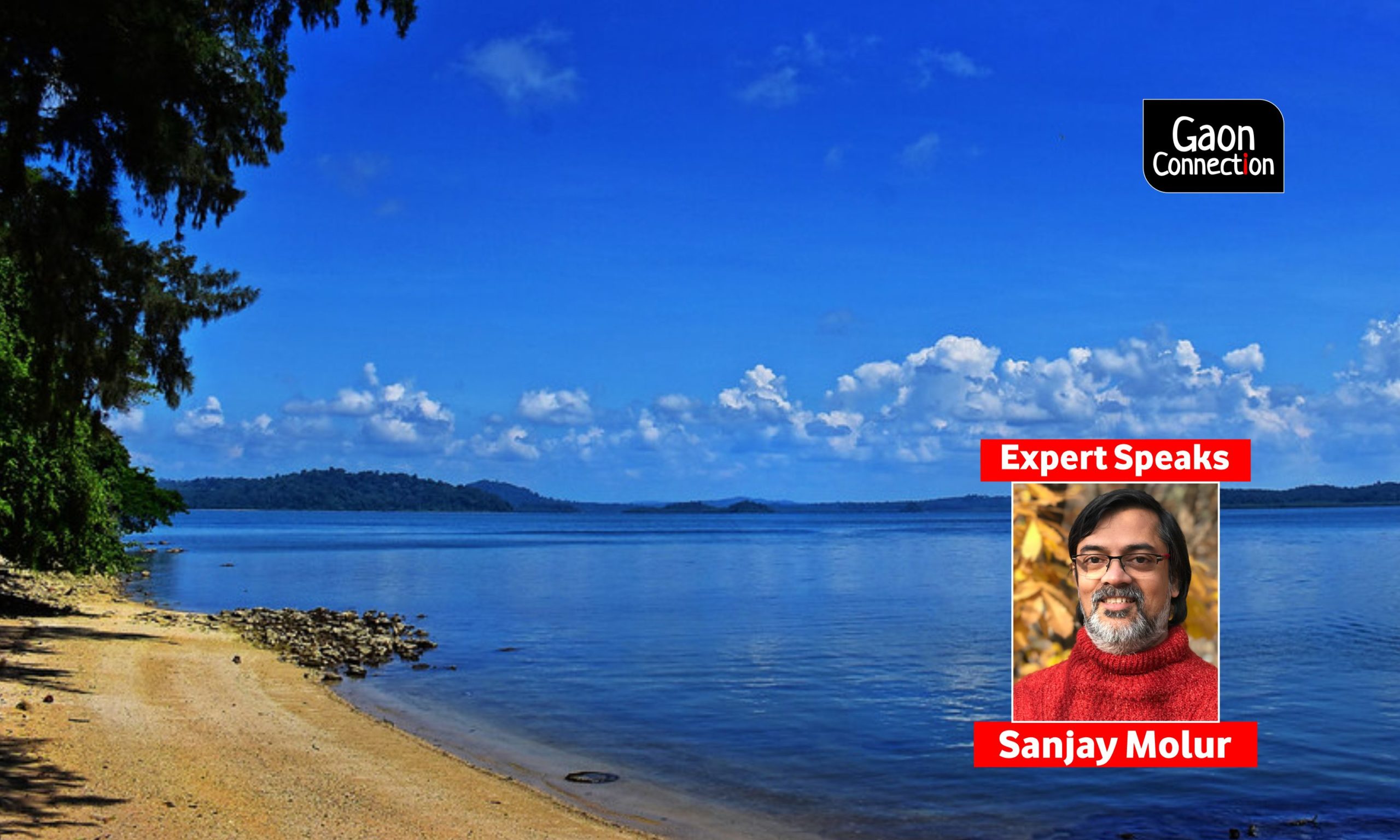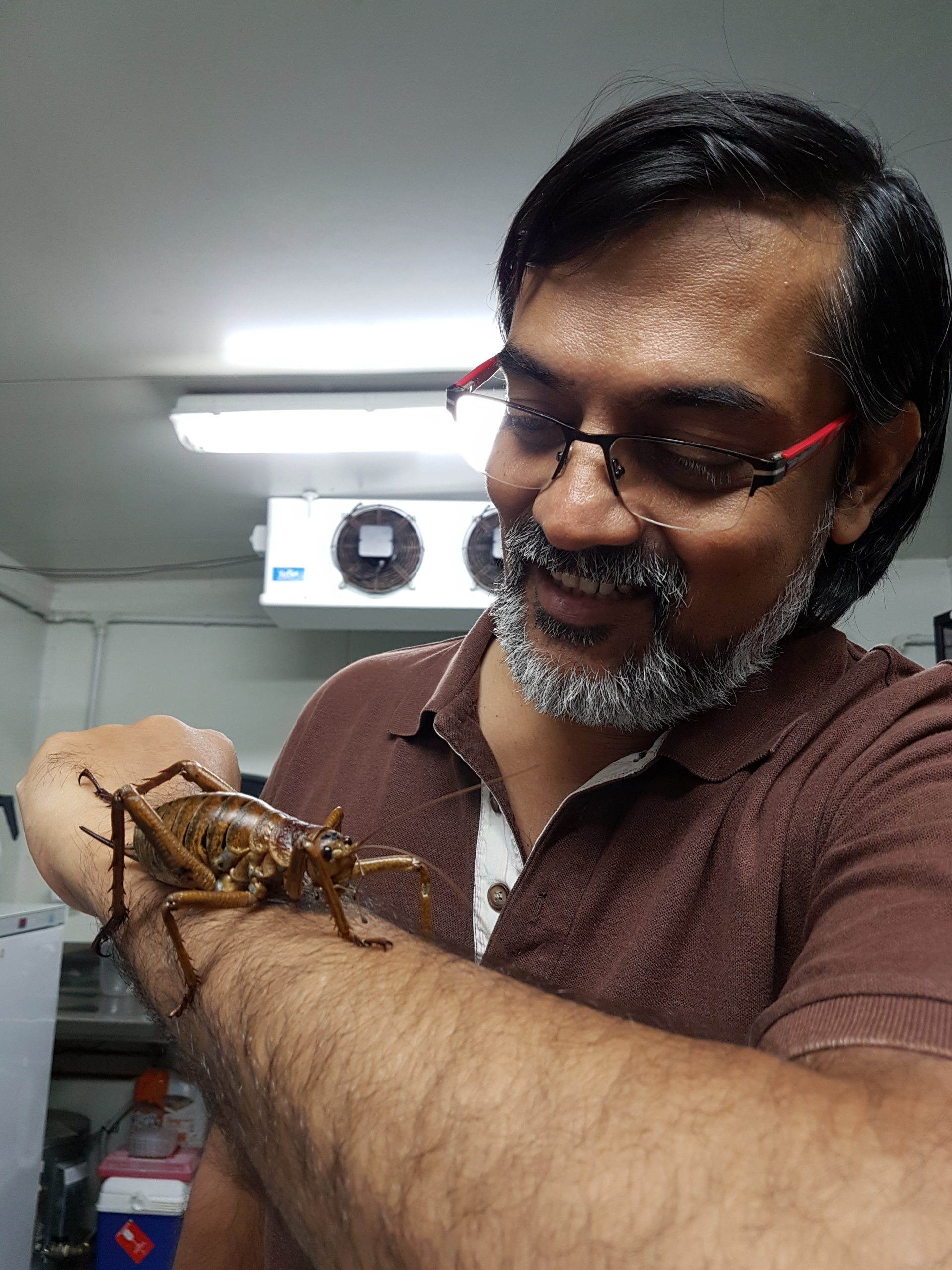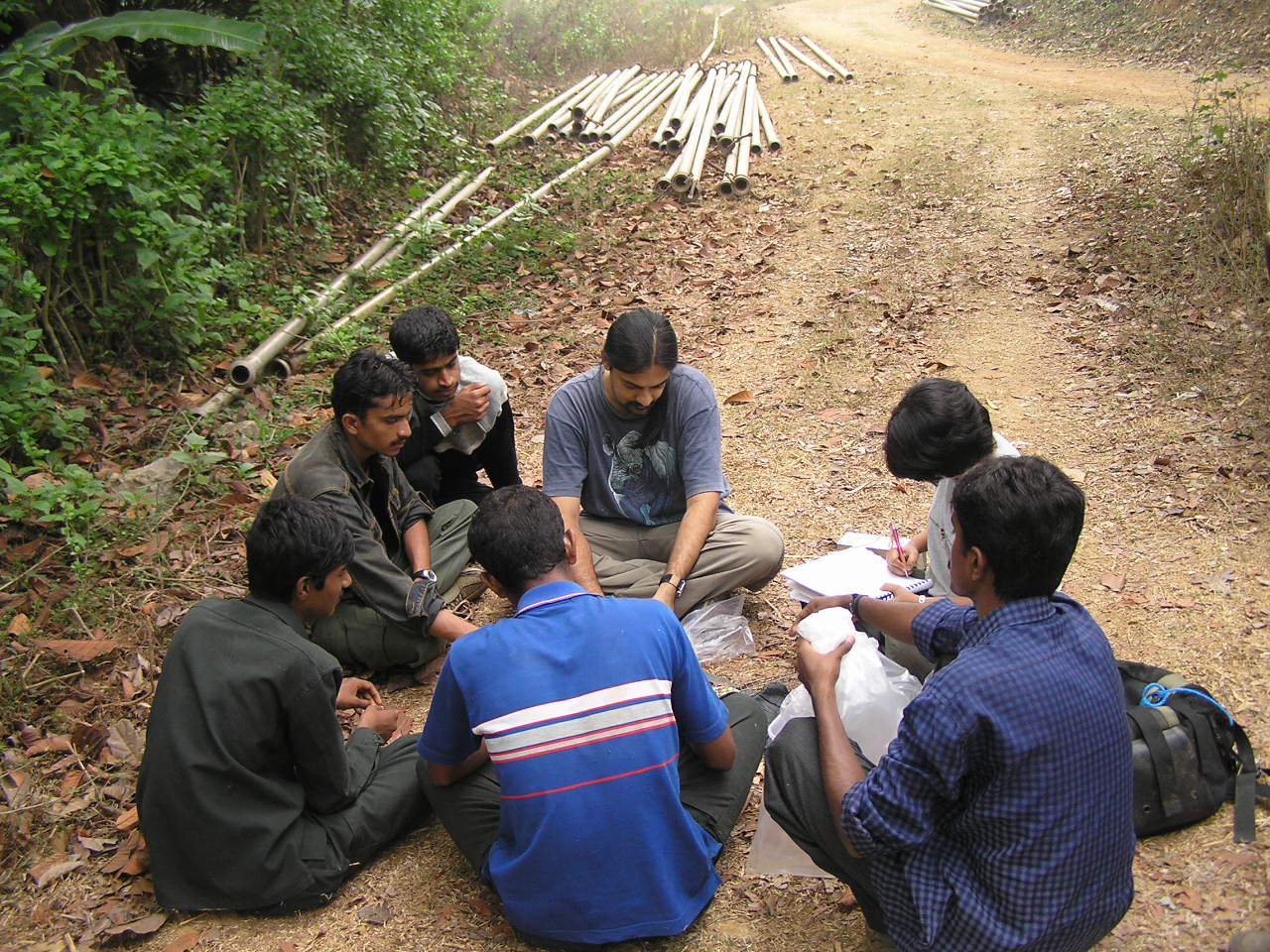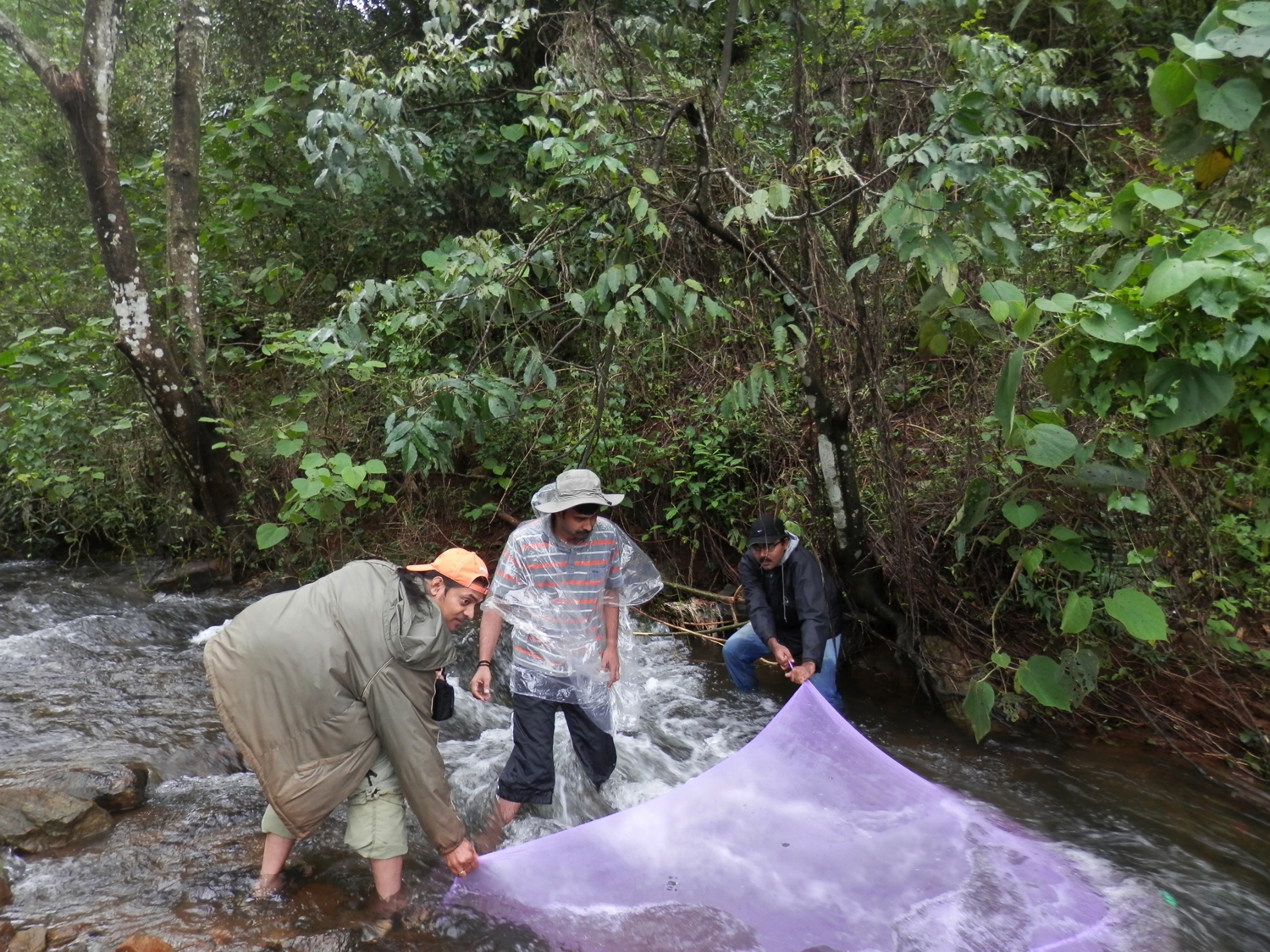“The developmental projects in the Little Andaman Island will have a direct impact on the biodiversity and cascading effects on the indigenous Onge tribe”
Sanjay Molur is a well known wildlife conservationist who was recently awarded Sanctuary Asia’s ‘Wildlife Service Award 2020’. In a free-wheeling conversation with Gaon Connection, Molur shares his thoughts on the proposed controversial developments in the Little Andaman Island, and the need to protect the ecologically rich Western Ghats.


Photo: Abeer/flickr
Coimbatore, Tamil Nadu
On January 30, Coimbatore-based wildlife conservationist, Sanjay Molur, was awarded Sanctuary Asia’s prestigious ‘Wildlife Service Award 2020’ for his pioneering work in the field of wildlife conservation for over a quarter of a century.
Molur has contributed to the International Union for Conservation of Nature (IUCN) Red Listing process and developed species conservation plans along with subject experts in South Asia to understand the risk of extinction faced by various species such as the Asiatic Lion, the Red Panda and the Gharial.
He has also worked extensively with bats, frogs and snakes, besides medicinal plants, and evaluated the status of over 10,000 species from across the world. He was amongst the first scientists to report the dangerous chytrid fungus affecting frogs in the Western Ghats.
Molur has participated in citizen-science initiatives, community, awareness campaigns, and worked on policies in connection with freshwater biodiversity and ecosystems, and on marine organisms like sea cucumbers to promote evidence-based policy decisions.
He is the founder of the Journal of Threatened Taxa, the first international platinum open-access journal in India that publishes scientific articles on flora, fauna and fungi to promote evidence-based conservation in India.
In a free-wheeling conversation with Gaon Connection, Sanjay Molur shares his concerns about the environment, particularly on the Western Ghats and of course, his thoughts on the recent development proposals made for Little Andamans in the Andaman and Nicobar islands.

Gaon Connection: NITI Aayog has prepared a ‘Sustainable Development of Little Andaman Island – Vision Document’ with plans to develop a new greenfield coastal city, free trade zone, ‘underwater’ resorts, casinos, golf courses, convention centres, etc. What are your thoughts on such development projects on the island?
Sanjay Molur: The first thing that occurred to me was, “Don’t we ever learn from our mistakes?” Irrespective of the size of the island, what’s bothersome are the terms used for the proposed project — sustainable and holistic development. Anything that impacts nature irreversibly is not sustainable. Anything that impacts sustainability is not holistic. And when there is nothing holistic or sustainable, it cannot be called development.
The ‘developmental’ projects in the Little Andaman Island will have a direct impact on the biodiversity and cascading effects on the indigenous Onge tribe. The NITI Aayog report suggests that the wildlife, tribes and the ecosystem are stumbling blocks for development!
I can’t think of a single example of sustainable development envisioned by the government that has worked. If the progress of activities on that island can be considered sustainable, one wouldn’t see the constant conflict between the wants of the mainlanders and the needs of the indigenous Jarawa tribal population. The rampant changes in the rest of the island with a few pockets of biodiversity in protected areas are a constant reminder as to how poorly envisioned and ad hoc development projects continue to impact the fragile ecosystem there.
And once the ecosystem is impacted and the tribes are compromised, then only lowering sustainability standards will be the baseline to work with in the future. And that takes us back to previous ‘development’ cycles.
I understand there needs to be development and I am not at all against it; but there are many aspects to consider before true development can happen.

GC: Why are Andaman & Nicobar Islands special?
SM: The Andaman & Nicobar Islands are not fully studied for their biodiversity. New findings keep emerging regularly which indicates much work requires to be done. While researchers are finding new species from these precious islands, they are also finding new alien invasive species in the composition. Alien invasive species are an indication of negative human impacts.
Given the scope of the proposed project in the Little Andaman, which is the size of Bengaluru city, the entire island will be impacted.
GC: In your opinion, what are some of the ecologically fragile hotspots in the country that need more attention from the authorities and the common people that could save them?
SM: There are so many. The Western Ghats is a good place to begin. It needs urgent intervention to be conserved with coordinated action by authorities and the common people. There are hot specks within the hotspot of habitats that are really unique and require urgent conservation action.
A few examples that come to mind are the many grasslands, rocky plateaus, natural wetlands, shola forests, mangroves, etc. Further zoomed in, there are key defining habitats that are home to certain groups of species that are not found anywhere else in the world. These could be the last homes for species that could be driven to extinction if the habitats are lost. Myristica swamps, bogs, streams are some examples that come to mind.
GC: The Indian government had set up committees — Gadgil Committee, Kasturirangan committee to study the Western Ghats and declare parts of it as eco-sensitive. But nothing much has come out of their reports.
SM: This is a rather complicated issue. It started off as a stakeholder-driven exercise of gathering peoples’ perceptions including livelihoods and their knowledge about the natural world, composed with the data available from scientific literature on biodiversity and ecology.
The Madhav Gadgil report on the Western Ghats was a truly inclusive effort bringing out what is absolutely needed to conserve the hotspot for its diversity, ecology, livelihoods, and delineating ecologically sensitive zones for more measured approaches.
The conflict is not between the environment and livelihoods/development as is widely misunderstood, it is in fact a conflict between the environment/livelihoods/development on the one hand with politics on the other. This has gone beyond the evidence-based compilation of the Gadgil report to purely fictional, conspiracy-based political deterrents at the state and local levels.
This one is a tough situation. I doubt there will be any fast resolution despite overwhelming evidence of rampant, unhinged development in the Western Ghats, resulting in calamities such as the floods and landslides.

GC: Today, along with the Zooreach team, you are combating the climate crisis and creating awareness about the role of species in the survival of the human race. Please tell us more about it.
SM: The fundamental units that define ecosystems are life forms that we call species or taxa. Habitats that are the big canvas for conservation are nothing but a massive collection of taxa interacting with the inorganic landscape. So, species therefore becomes the fundamental unit of conservation.
Species individually and in tandem contribute to combating the climate crisis. Conserving species means conserving habitats and vice-versa. And that is what Zooreach does — research, develop plans, and implement conservation action on the ground.
These are done with extensive collaborations with various organisations, build capacity in individuals and organisations, and reach out to involve the general public through citizen science initiatives.
Any conservation action will only work if it is built upon a solid education, awareness, and outreach program, which reaches out to the communities involved and seeks their inputs. For this, at Zooreach we have several lines of approach — publications, education and awareness, and outreach.
GC: Do you think we are far gone, beyond the tipping point and heading towards ecological disaster?
SM: In this world of dismay, one tends to feel disheartened. However, there is hope for a change for the better. What we need is a faster rate of participation of the general public in conservation activities than the rate of destruction imposed in the name of shoddy development ideas. People’s involvement will ensure proper development to take place along with conservation.
The key challenge is to sway people from the rhetoric of conspiracy theories and fiction to factual evidence-based environmental realities. The scientific community must also let go of the academic approach to science where publications are ruled by marketing gimmicks like impact factor and publish the findings in peer-reviewed publications to add to the science.
Similarly, conservationists who work on the ground must also publish their experience in the field to indicate the positives or negatives of their methods for others to learn from. Once these boundaries are breached, the reach will expand.
We can still make a positive change, so let’s all work together locally, regionally, nationally, and globally.

